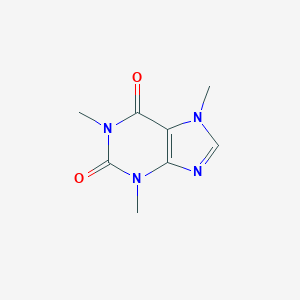|
Caffeine is the most widely consumed psychostimulant drug in the world and is mostly consumed in the form of coffee. Whether caffeine and/or coffee consumption contributes to the development of cardiovascular disease (CVD), the single leading cause of death in the US, is unclear. The literature indicates a strong relationship between boiled, unfiltered coffee consumption and elevated cholesterol levels; however, there is a critical gap in the literature regarding the effects of coffee or caffeine consumption on fibrinogen or CRP, which is an independent predictor of CVD risk. Available studies are limited by small samples sizes, the inclusion of only men (or few women), and unrepresented age or ethnic groups. There is a critical need for controlled laboratory and epidemiological studies that include fibrinogen and CRP markers of CVD risk before conclusions can be drawn regarding the health effects of caffeine and/or coffee in a normal, healthy population of men and women. The relationship between caffeine consumption and various illnesses such as cardiovascular disease and cancer remains equivocal. Prudence might dictate that pregnant women and chronically ill individuals exercise restraint in their use of caffeine, although research suggests relatively low or nonexistent levels of risk associated with moderate caffeine consumption. There is extensive evidence that caffeine at dietary doses increases blood pressure (BP). However, concern that the drug may contribute to cardiovascular disease appears to have been dampened by (1) the belief that habitual use leads to the development of tolerance, and (2) confusion regarding relevant epidemiologic findings. When considered comprehensively, findings from experimental and epidemiologic studies converge to show that BP remains reactive to the pressor effects of caffeine in the diet. Overall, the impact of dietary caffeine on population BP levels is likely to be modest, probably in the region of 4/2 mm Hg. At these levels, however, population studies of BP indicate that caffeine use could account for premature deaths in the region of 14% for coronary heart disease and 20% for stroke. Caffeine is a purine alkaloid that occurs naturally in coffee beans. At intake levels associated with coffee consumption, caffeine appears to exert most of its biological effects through the antagonism of the A1 and A2A subtypes of the adenosine receptor. Adenosine is an endogenous neuromodulator with mostly inhibitory effects, and adenosine antagonism by caffeine results in effects that are generally stimulatory. Some physiological effects associated with caffeine administration include central nervous system stimulation, acute elevation of blood pressure, increased metabolic rate, and diuresis. Caffeine is rapidly and almost completely absorbed in the stomach and small intestine and distributed to all tissues, including the brain. Caffeine metabolism occurs primarily in the liver, where the activity of the cytochrome P450 isoform CYP1A2 accounts for almost 95% of the primary metabolism of caffeine. CYP1A2-catalyzed 3-demethylation of caffeine results in the formation of 1,7-dimethylxanthine (paraxanthine). Paraxanthine may be demethylated by CYP1A2 to form 1-methylxanthine, which may be oxidized to 1-methyluric acid by xanthine oxidase. Paraxanthine may also be hydroxylated by CYP2A6 to form 1,7-dimethyluric acid, or acetylated by N-acetyltransferase 2 (NAT2) to form 5-acetylamino-6-formylamino-3-methyluracil, an unstable compound that may be deformylated nonenzymatically to form 5-acetylamino-6-amino-3-methyluracil. Caffeine concentrations in coffee beverages can be quite variable. A standard cup of coffee is often assumed to provide 100 mg of caffeine, but a recent analysis of 14 different specialty coffees purchased at coffee shops in the US found that the amount of caffeine in 8 oz (=240 ml) of brewed coffee ranged from 72 to 130 mg. Caffeine in espresso coffees ranged from 58 to 76 mg in a single shot. Caffeine is a member of the methylxanthine family of drugs, and is the most widely consumed behaviourally active substance in the western world. A number of in vitro and in vivo studies have demonstrated that caffeine modulates both innate and adaptive immune responses. For instance, studies indicate that caffeine and its major metabolite paraxanthine suppress neutrophil and monocyte chemotaxis, and also suppress production of the pro-inflammatory cytokine tumour necrosis factor (TNF) alpha from human blood. Caffeine has also been reported to suppress human lymphocyte function as indicated by reduced T-cell proliferation and impaired production of Th1 (interleukin [IL]-2 and interferon [IFN]-gamma), Th2 (IL-4, IL-5), and Th3 (IL-10) cytokines. Studies also indicate that caffeine suppresses antibody production. The evidence suggests that at least some of the immunomodulatory actions of caffeine are mediated via inhibition of cyclic adenosine monophosphate (cAMP)-phosphodiesterase (PDE) and consequential increase in intracellular cAMP concentrations. Overall, these studies indicate that caffeine, like other members of the methylxanthine family, is largely anti-inflammatory in nature, and based on the pharmacokinetics of caffeine, many of its immunomodulatory effects occur at concentrations that are relevant to normal human consumption.
|
 click to show the details of this protein
click to show the details of this protein
 click to show the details of experiment for validating this pair
click to show the details of experiment for validating this pair
 click to show the details of this protein
click to show the details of this protein
 click to show the details of experiment for validating this pair
click to show the details of experiment for validating this pair

